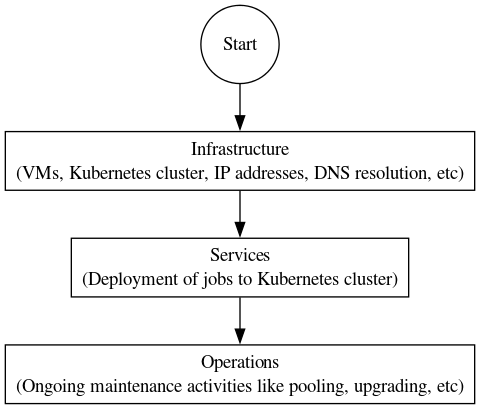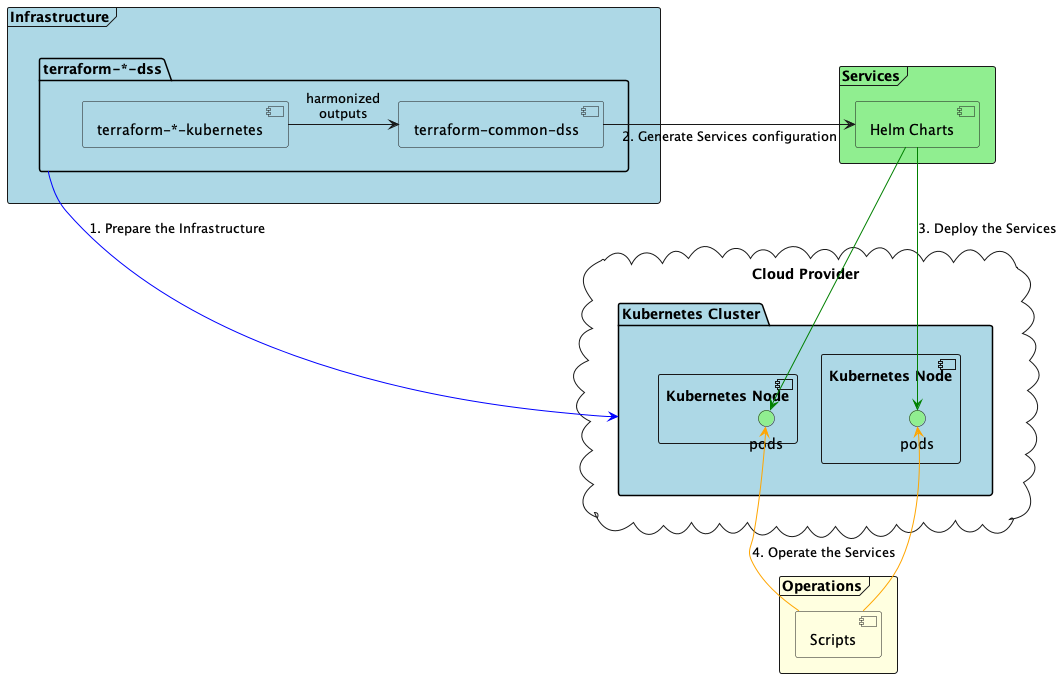DSS Deployment
Introduction
An operational DSS deployment requires a specific architecture to be compliant with standards requirements and meet performance expectations as described in architecture. This page describes the deployment procedures recommended by InterUSS to achieve this compliance and meet these expectations.
Deployment layers
This repository provides three layers of abstraction to deploy and operate a DSS instance via Kubernetes.

As described below, InterUSS provides tooling for Kubernetes deployments on Amazon Web Services (EKS) and Google Cloud (GKE). However, you can do this on any supported cloud provider or even on your own infrastructure. Review InterUSS pooling requirements and consult the Kubernetes documentation for your chosen provider.
The three layers are the following:
- Infrastructure provides instructions and tooling to easily provision a Kubernetes cluster and cloud resources (load balancers, storage…) to a cloud provider. The resulting infrastructure meets the Pooling requirements. Terraform modules are provided for:
- Services provides the tooling to deploy a DSS instance to a Kubernetes cluster.
- Operations provides instructions to operate a deployed DSS instance.
Depending on your level of expertise and your internal organizational practices, you should be able to use each layer independently or complementary.
For local deployment approaches, see the documentation located in the build folder
Getting started
You can find below two guides to deploy a DSS instance from scratch:
For a complete use case, you can look into the configurations of the CI job in operations: ci
Migrations and upgrades
Information related to migrations and upgrades can be found in MIGRATION.md.
Development
The following diagram represents the resources in this repository per layer.

Formatting
Terraform files must be formatted using terraform fmt -recursive command to pass the CI linter check.